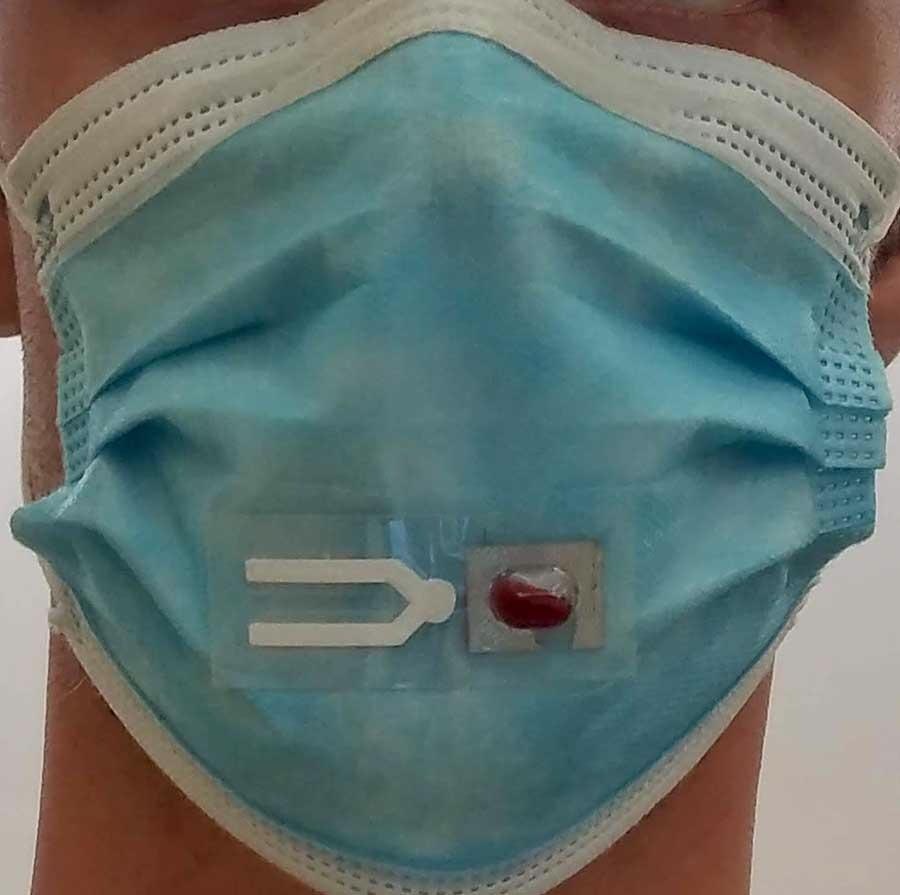AZoSensors speaks with Jesse Jokerst who heads up the Jokerst group at UC San Diego. The group has recently developed an affordable COVID-19 monitoring sensor that can be applied to facemasks. The team's research has benefitted from a $1.3 million investment from the National Institutes of Health as part of the NIH's Rapid Acceleration of Diagnostics Radical (RADx-rad) program for COVID-19.
Can you give our readers a summary of your recent research?
My research in general is in the area of imaging and nanotechnology, in particular we use optics and acoustics to treat human disease. This specific research used an optical signal to monitor the proteases involved in SARS CoV-2, that leads to COVID-19.
What 'high-risk' environments could benefit by implementing the sensor?
This development is more so to do with surveillance rather than testing. A good example is a smoke detector, a smoke detector doesn't necessarily tell you where specifically the fire is, or what kind of fire it is, but it alerts you that you need to take some action. It is constantly sitting there and monitoring and waiting to tell you to take that action.
This color-changing test strip on masks allows constant daily surveillance of high-risk settings, potentially preventing the spread of COVID-19. These high-risk environments would be places like homeless shelters, daycare facilities, factories, nursing homes, any indoor settings where people congregate in high numbers.
How vital is daily monitoring in the fight against COVID-19?
Monitoring COVID-19 symptoms on a daily basis is critical. That's the difference between testing and surveillance. If you're lucky you get tested, maybe once a week, but this surveillance would be an approach that would be done daily. For example, if this were in a prison with staff working three shifts a day, staff could check at the end of their shift, so every 8 hours, whether or not they have been exposed.
Can you describe the fabrication technique involved in the sensor's production and why this makes mass production easier?
The technique is known as 'roll-to-roll' processing and these are large pieces of laser-cut plastic and glue that go together very quickly. The other component is what is known as a blister pack. This technology has been established and that's why it should be easy to scale-up.

The team from UC San Diego has devloped a color-changing testing strip that can detect the SARS-CoV-2 virus in the user's saliva or even breath. Image Credit: UC San Diego.
Could the sensor be adapted in the future to deal with potential future pandemics?
Suppose it is a coronavirus class of pandemic. In that case, it seems likely, the protease that we are actually detecting and the protease that is causing this color change was conserved from the original SARS, MERS and SARS CoV-2. It stands to reason that any coronavirus pandemic will produce the same biomarking that we are monitoring.
Can you provide our readers with some information on the research you are currently involved in, in relation to N95 respirators?
This work is mostly complete. What we were trying to understand is how do N95 respirators respond to decontamination methods. Back in March 2020, there was a real concern about running out of PPE, and places were running out. People were trying all sorts of ways of reducing, reusing and recycling PPE, so we wanted to understand how the material properties of these respirators change when they were heated, heating being one of the most common and easy ways of decontaminating a N95 respirator.
We found that over time, there was some loss of charge as these respirators were heated. It had a real, but relatively small impact on their ability to still filter small particles. N95 stands for '95 % efficiency', so it went from about 95% to about 90% of the model particles that we were studying, this suggests that gentle heating to 70oC indeed has some value in reusing N95 respirators should they be needed.
Where can readers find more information?
Your readers can find more information here: http://jjokerst.eng.ucsd.edu/.
About Jesse Jokerst
 Jesse V. Jokerst is an Associate Professor in the Department of NanoEngineering at UC San Diego. Dr. Jokerst graduated cum laude from Truman State University in 2003 with a B.S. in Chemistry and completed a Ph.D. in Chemistry at The University of Texas at Austin in 2009.
Jesse V. Jokerst is an Associate Professor in the Department of NanoEngineering at UC San Diego. Dr. Jokerst graduated cum laude from Truman State University in 2003 with a B.S. in Chemistry and completed a Ph.D. in Chemistry at The University of Texas at Austin in 2009.
Jesse was a postdoc at Stanford Radiology from 2009-2013 and was an Instructor in that same department from 2013-2015. Jesse started at UCSD in July of 2015, and he has received the NIH K99/R00 Pathway to Independence Award, the NIH New Innovator Award, the NSF CAREER Award, and Stanford Radiology Alumni of the Year Award.
He is the PI of eight active NIH grants, two NSF grants, and serves on the Editorial Advisory Board of ACS Applied Nano Materials and Nanoscale.
Disclaimer: The views expressed here are those of the interviewee and do not necessarily represent the views of AZoM.com Limited (T/A) AZoNetwork, the owner and operator of this website. This disclaimer forms part of the Terms and Conditions of use of this website.